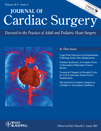Mechanical Circulatory Support as a Bridge to Transplant Candidacy
Conflict of interest: Dr. Rao is on the Scientific Advisory Board for Terumo Inc.
Abstract
Abstract Introduction: The use of mechanical circulatory support (MCS) in nontransplant eligible candidates remains controversial. Our decision to offer MCS for nontransplant candidates has led to their reevaluation after a period of left ventricular assist device (LVAD) support. Methods: From 2001 to September 2009, we had 37 patients who received an implantable LVAD, 22 (59%) were not deemed to be transplant eligible at the time of LVAD insertion (bridge to candidacy, BTC group). Results: Fifteen (41%) patients were considered transplant eligible (bridge to transplant, BTT group) at the time of device insertion and received a HeartMate XVE (n = 7), HeartMate 2 (n = 7), or a Novacor LVAS (n = 1). In the BTC group, patients received the HeartMate XVE device (n = 11), HeartMate 2 (n = 5), or the Novacor LVAS (n = 6). The primary criterion for transplant ineligibility was refractory pulmonary hypertension (PH) in 18 patients, 3 patients did not meet our body mass index criteria (>35 kg/m2), and 2 patients were dialysis-dependent. Six (27%) BTC patients died on support. Overall, 16/22 patients (73%) were subsequently listed for transplantation, with one listed for combined heart–lung due to refractory PH. Twelve patients (75%) underwent successful heart transplantation. Three patients died during their transplant. Overall posttransplant survival at one year shows lower survival in the BTC group compared to the BTT group (67% vs. 100%, p = 0.05). At two years and three years the survival was lower, but not statistically different (BTC vs. BTT: 67% vs. 90% and 64% vs. 87%, respectively, p = NS). Conclusions: MCS can successfully convert a large proportion of transplant-ineligible patients into acceptable candidates. (J Card Surg 2011;26:542-547)




